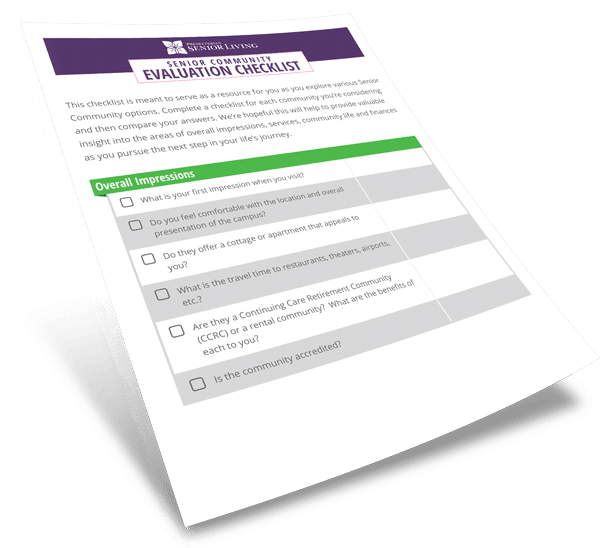Presbyterian Senior Living : Blog
Giving voice to the topics that mean the most to those who matter the most.
Housing & Development | Reflections & Leadership
Recently, six Presbyterian Senior Living communities were ranked at the top of the U.S. News & World Report list of Best Nursing Homes 2015. Best Nursing Homes provides information on care, safety, health inspections, staffing, and operations for approximately all nursing homes and retirement communities located throughout the United States. Data is obtained from the Centers for Medicare & Medicaid Services. Nursing homes too new or those with little data available may not appear in the list.
Share
It’s a known fact the population is aging. Seniors are the fastest growing demographic in the world. As life expectancy increases, so will the need for senior housing.
Share

Subscribe to the Presbyterian Senior Living blog and receive our free Community Evaluation Checklist to ensure you ask what’s most important to you.
This month, the senior living communities in the Presbyterian Senior Living Aging Services Network will celebrate our most recent accreditation by CARF International. This CARF accreditation process started with PSL’s long-term commitment to continuous improvement and culminated this past November with an external review by three of our industry peers.
Share
SeniorAdvisor.com, one of the premier ratings and reviews site for senior care and services, has recently awarded Glen Meadows Retirement Community, in Glen Arm, MD, the 2015 Best of Senior Living Award. The award recognizes the nation’s best of the best senior care providers.
Share
Finance & Planning | Housing & Development
The green wave of making buildings more environmentally safe is taking the senior living industry by storm. According to 2012 big data reported by Energy Star, a U.S. Environmental Protection Agency (EPA) program, Americans have saved a total of $24 billion on utility bills and have prevented gas emissions equal to that of 41 million vehicles. This kind of savings will only increase over the next few years, putting less strain on our wallets and protecting the earth for generations to come.
Share

Subscribe to the Presbyterian Senior Living blog and receive our free Community Evaluation Checklist to ensure you ask what’s most important to you.